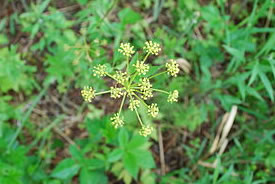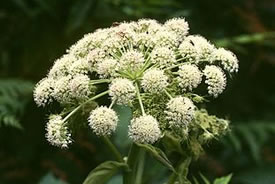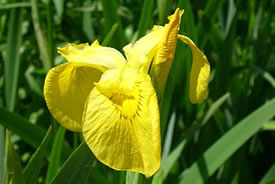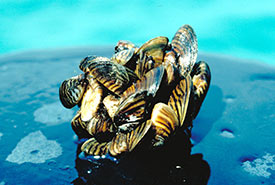Invasive Species Gallery
-

Wild parsnip
Wild parsnip is a member of the carrot/parsley family and is recognizable by its yellow-green flowers. The plants grow wild along roadsides and other unmaintained areas and produce yellow flowers that appear similar in shape to those of Queen Anne’s lace. This plant is usually found in abandoned fields, meadows, yards, roadsides, railways and trails with moist to dry soils. The plant sap contains chemicals that can cause severe burns to eyes and skin.
-

Woodland angelica
Woodland angelica may seem quite similar to queen-Anne's lace, but beware: it's actually a member of the celery family and a serious invader of wooded edges and moist open areas in New Brunswick.
-

Yellow iris
Yellow iris is an invasive species that poses a great threat to fragile wetland ecosystems.
-

Zebra mussel
Zebra mussels are freshwater mussels measuring around 2.5 centimetres long on average, but can grow up to four centimetres. They are an invasive species that has spread from their native Black Sea region of eastern Europe and western Asia waters to Canada.



